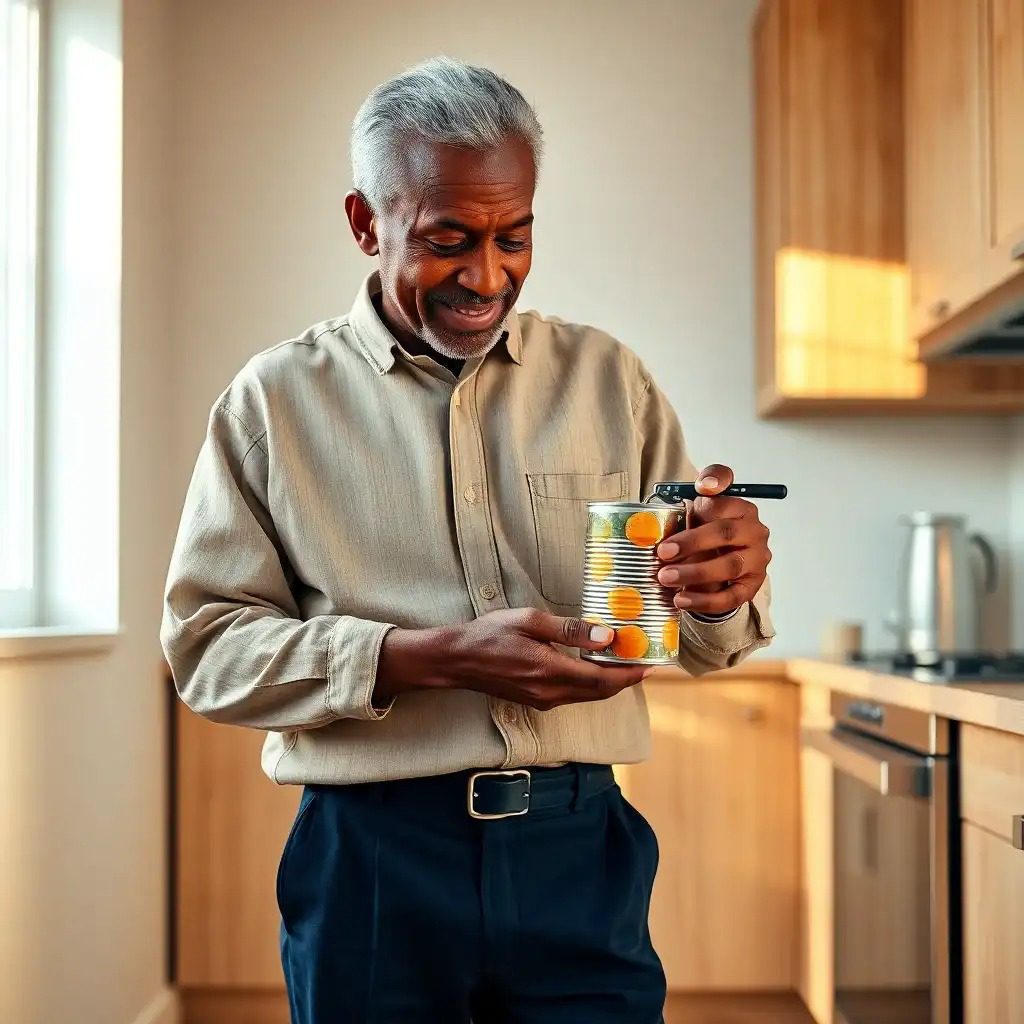
Imagine standing in your kitchen, holding a can of your favorite soup. You’re hungry, you’re excited, but the lid refuses to budge. Your hands ache, your grip slips, and frustration sets in. For many seniors, this moment isn’t just about a meal—it’s about independence. What if there was a tool that could turn this daily struggle into a simple, safe task? Let’s explore how adaptive can openers are quietly revolutionizing kitchens for elderly cooks.
Why Traditional Can Openers Feel Like Foes
Traditional can openers are designed for strong grips and steady hands. They require you to squeeze a handle, twist a knob, and carefully maneuver a sharp blade around the edge of a can. But for seniors with arthritis, weakened hands, or shaky fingers, this process can feel impossible. The slippery handles, the sharp edges, and the sheer effort needed often lead to frustration—or worse, accidents.
Over time, many elderly cooks stop using canned foods altogether, even if they love simple meals like soups, beans, or fruits. This isn’t just about convenience—it’s about losing a piece of joy and independence.
What Makes Adaptive Can Openers Different
Adaptive can openers are tools built with empathy. They’re designed to reduce physical strain and eliminate the fear of accidents. Instead of forcing you to wrestle with a can, these openers do most of the work for you.
There are three main types:
- Electric Can Openers: These plug into an outlet or use batteries. You press a button, and the machine cuts the lid automatically—no twisting or squeezing.
- One-Handed Openers: These have large, cushioned handles that let you open cans with minimal grip strength. Perfect for those who use one hand.
- Table-Mounted Openers: These attach to your countertop. You clamp the can in place and turn a handle gently—no need to hold the can steady.
How Adaptive Can Openers Restore Independence
For seniors, cooking isn’t just about food—it’s about dignity. Adaptive can openers give back the freedom to prepare meals without relying on others. Imagine:
- Making a quick bowl of soup when you’re feeling under the weather.
- Surprising your grandkids with their favorite spaghetti recipe.
- Enjoying canned peaches without waiting for help.
These tools also reduce risks. Many adaptive openers have safety features like smooth edges, non-slip grips, and automatic shut-offs. No more jagged lids or slipping blades.
The Hidden Benefits You Might Not Expect
Beyond convenience, adaptive can openers offer surprising perks:
- Less Fatigue: Struggling with a traditional opener can tire your hands and wrists. Adaptive tools let you save energy for enjoying your meal.
- Confidence Boost: Regaining control in the kitchen can lift your mood and make cooking fun again.
- Safety for Everyone: Even caregivers feel relieved knowing their loved ones can open cans safely.
How to Choose the Right Adaptive Can Opener
Picking the perfect opener depends on your needs. Ask yourself:
- Do I struggle with grip strength? → Try an electric model.
- Do I have arthritis or hand pain? → Look for large, soft handles.
- Is my countertop space limited? → A compact one-handed opener might work best.
Key features to prioritize:
- Non-Slip Handles: Rubber or silicone grips prevent slipping.
- Easy to Clean: Dishwasher-safe parts save time.
- Quiet Operation: Some electric models are loud—check reviews if noise bothers you.
Debunking Myths About Adaptive Tools
Simple Safety Tips for Stress-Free Cooking
- Always place the can on a flat, stable surface.
- Clean the blade after each use to keep it sharp and safe.
- If a can feels stuck, ask for help—don’t force it.
Answers to Common Questions
Why This Matters More Than You Think
Adaptive can openers aren’t just tools—they’re bridges to joy. Cooking is about memories, creativity, and nurturing yourself and others. With the right opener, a stubborn lid won’t steal that joy. Whether it’s a vintage soup recipe or a simple snack, every meal becomes a victory.
